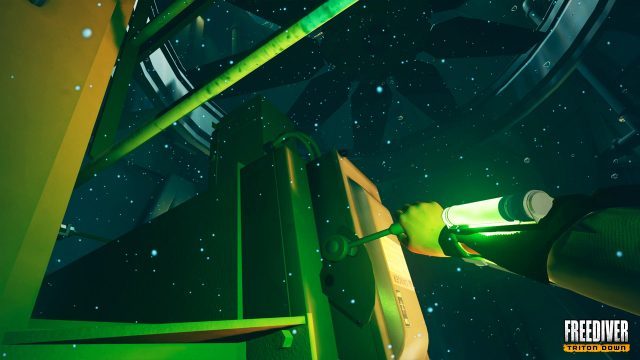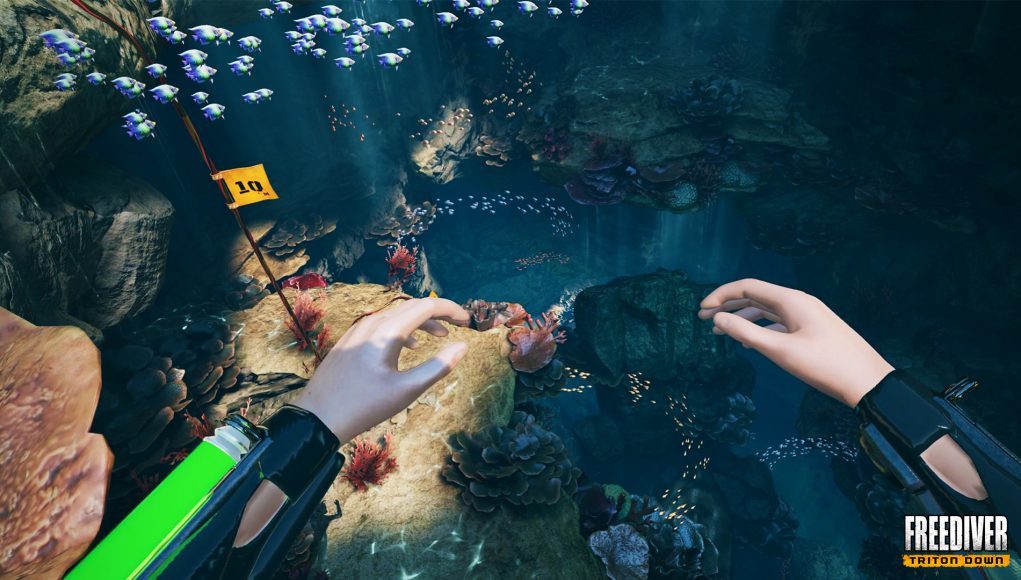Freediver: Triton Down launched quietly at the end of May, and while the $9 price reflects its short playtime, the title demonstrates a strong grasp of VR game design with a ‘swimming’ locomotion mechanic which is woven into the underlying gameplay.
From developer Archiact, Freediver: Triton Down is a total departure (in all the right ways) from the studio’s previous title, Evasion (2018). It’s a short but worthwhile narrative adventure about an oceanographer who gets caught in a capsized research vessel after discovering something unexpected in a cave in the ocean depths.
With a running time of roughly an hour, Triton Down is small in scope but big on VR game design. The game is built entirely around a ‘swimming’ locomotion system which is more than just a way to get the player from A to B. Not only does it allow you to seamlessly navigate in 3D space underwater, it creates a built-in tension between movement and survival as the player has to surface for air or risk drowning. This effectively puts a time limit on puzzle solving which is always in the back of your head, especially as the oxygen indicator on your arm beeps as it gets closer to 0%.
Swimming works by pulling the triggers and then swinging both arms at the same time to stroke, pushing you in the desired direction. If you want to turn artificially you can swing just one arm at a time which will rotate your body. To me this felt just a little bit odd and I preferred to simply rotate my real body in place (of course that meant I had to deal with the cord). There’s settings to adjust how much speed and momentum you get from each stroke; I found the default to be a good balance between ‘realism’ and not feeling like you’re playing the game to get workout.
In addition to swimming, you can also grab pretty much any part of the terrain to pull yourself along. This is not only convenient and natural, Triton Down smartly uses it as a means of getting through areas of high water current that is flowing too fast for you to swim against.
The game is essentially a narrative adventure with some light puzzle solving. And while neither the story nor the puzzles get particularly deep, it’s fun just to be part of the adventure as it unfolds.

Exploring the capsized vessel with swimming locomotion allows the game to make interesting use of space as players explore areas made foreign by their upside down orientation. The game does a good job of making players feel embodied with its interactions. There’s the terrain to grab, doors and levers to pull, oxygen refill stations, glow sticks for lighting your way, and the oxygen gauge on your wrist which you’ll be referencing often. Smart use of lights a several points throughout the game lets you catch a glimpse of yourself using your arms to swim through the world which adds to the embodied feeling.
Despite a lot of smart VR game design on display, Triton Down does make a few odd missteps for immersion; at the start of the game the player inexplicably sees themselves through the perspective of another character (why?), and the handful of cutscenes strangely cut to a disembodied third-person view.
Considering the small scope and low cost of the game, however, it’s easy to forgive these flaws for what is otherwise an immersive VR adventure worth taking. Compared to Evasion, Archiact’s previous game, Freediver: Triton Down is a breath of fresh air thanks to its engaging interactivity and thoughtful VR design. I hope to see the studio embrace this approach and apply it on a larger scale to future titles.







